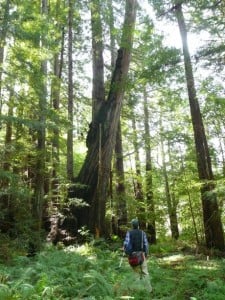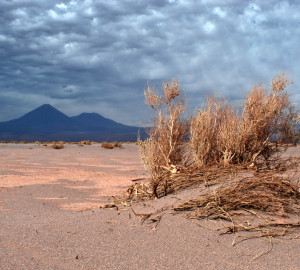Recently our Conservation Science Manager and I set out into one of the League-owned forests to map its trees. We wanted to know where the younger redwoods are located, in order to determine where a future  landowner of the property can and cannot cut trees.
landowner of the property can and cannot cut trees.
The importance of allowing for some carefully-planned tree harvesting is becoming more widely understood and accepted. Done sustainably and scientifically, it can greatly improve the overall health of the forest and protect it from wildfire.
With this in mind, we walked the entire forest, identifying areas to put into reserve (which means no trees would be cut in those areas) and areas where some harvesting would be allowed.
We follow three main criteria when identifying areas where some harvesting could be allowed:
- Areas dominated by younger redwoods (to allow for space between trees, thus promoting larger growth of the standing redwoods)
- Areas far enough away from streams (to avoid damage and sedimentation to streams)
- Areas with only a gentle slope (to avoid hillside erosion)
Now that we have mapped out the areas of the property to keep in reserve and areas that may allow for some cutting, we feel assured that this property will continue to provide healthy redwood forest habitat once we are no longer the landowners. And, we feel assured that we are fulfilling our mission to protect and restore redwood forests.



2 Responses to “Preparing our Properties for Future Landowners to Manage Sustainably”
Luke
Why is the league selling land that is currently protected? Sure you can make money doing so, but why not keep the land protected forever? These forests managed themselves quite well before humans showed up.
Jessica Neff
Great question and thanks for your interest. When we transfer or sell a property to another person, we do so with restrictions in place (usually via a Conservation Easement) that will ensure the property is protected from things like clear-cutting, sub-division and development once we no longer own it. We are able to protect more land this way. You can check out our FAQ page and read a little more about how we ensure the property is protected before we sell it.
Also, in some cases we own land that has been cut-over by loggers in the past, so the trees are all the same age and are crowding each other out. By allowing some harvesting, we are actually allowing the redwoods to grow bigger and much healthier than they would if the forest was left along. Not to mention, reducing the threat of a catastrophic wildfires.
Thanks again for your question.